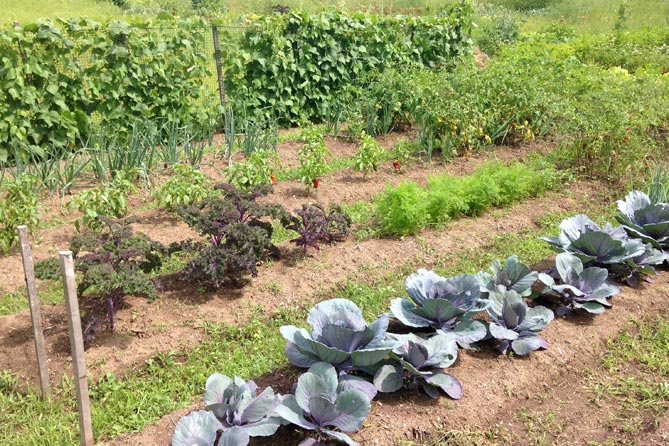
A few weeks ago I spent the day in our garden, playing catch-up. After 9 straight hours of weeding, clipping, digging, mounding and watering, I realized that work in the garden has similarities to the marketing efforts you use to grow a business and build a brand. From the day you decide what to grow and when to start, to the first harvest when your kitchen table is covered with tomatoes, the entire process of gardening has remarkable parallels in the marketing world. There are many metaphors for life in gardening, but they all seem to come down to the same basic thing: tend to your garden and you will be rewarded. Reap what you sow.
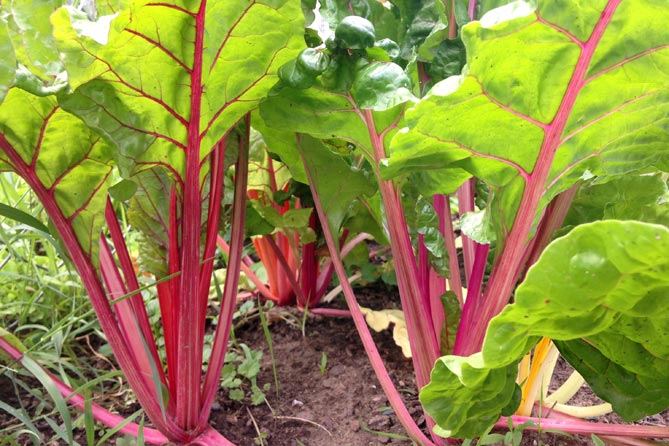
1. Careful Planning
Successful garden planning starts way before the snow melts. What plants do you want, for what reasons? How will you prep your soil? Are you using starters or growing from seed? Research your region and climate—what plants will grow well, which fruits, vegetables or ornamentals do you desire? What is your timeframe for each plant—when should you plant, when does it mature, when should you harvest? Can you have more than one planting per season? Will you have a wide variety of plants or concentrate on just a few vegetables? Have you considered companion planting, pairing species that grow well together and provide heterogeneity that helps soil health and pest control?
Successfully planning your marketing efforts also starts way before implementation. Good marketing strategy will determine which mix of [techniques and outlets] will yield the best results for your mission-driven company. Market analysis and a creative brief are essential for success. Research determines which marketing vehicles will companion well, to help your efforts, or what you've planted, grow most effectively in your area, for your target audience. You avoid the monoculture of using a single technique or vehicle to get your message out, and maintain tactic-neutral open-mindedness, creativity and diversity in your approach. Timing is important, both when various elements are implemented, and in what season or time of year you launch. For example, when your PR campaign hits, you need to have supporting collateral in the right places, and your online presence should be ready to go; and, certain times of year are better than others for promoting seasonal-specific or time-sensitive activities, products or ideas.
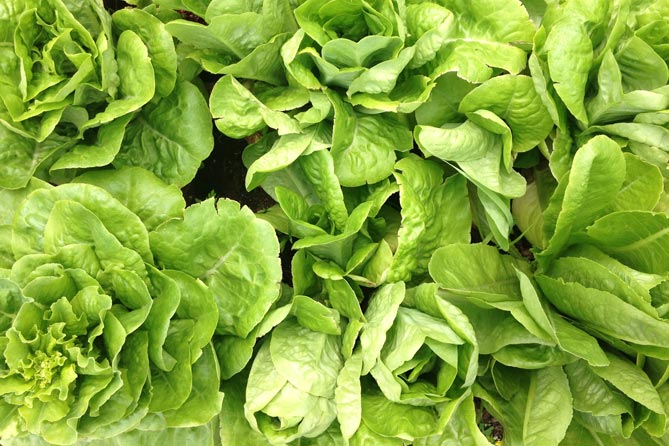
2. Effective Design
Armed with your plan, you need to design your garden effectively. Good design considers aesthetics, functionality, economics and humanity. Knowing how much space you have to work with. Planting the right things at the right times in the right places. Which plants should be in full sun, which need shade? How big is the plant at maturity? How wide are your rows? Do you have enough room to work, drag a rake, or fit a wheelbarrow? Is this going to be a utilitarian, maximum-food-generating effort with straight rows packed full, or do you want to create a beautiful design that inspires, nurtures and sustains the heart, mind and spirit as well as the stomach?
In marketing, you follow your creative brief to execute the right campaign, at the right time, in the places where your audience hangs out. Knowing your budget and timeframe sets parameters to design within. Certain techniques, typefaces, colors and design styles reinforce your brand, helping your story blossom. Does your brand demand design-intensive polish and/or new market innovation and impact, or tried and true classic aesthetics? Are you sticking to your strategy and allocating your budget properly to the different marketing vehicles and their creative and production phases? You may decide spending money on stock photos is a lose-lose when user-generated content is more appropriate and effective and costs nothing. Or you may decide against print advertising in favor of a Google AdWords campaign.
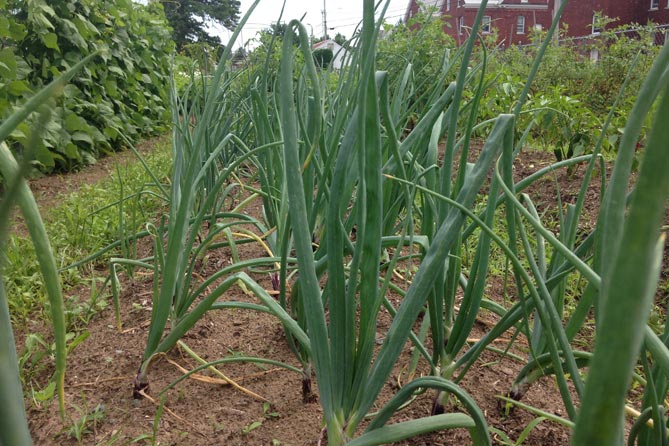
3. Maintenance
Water frequently, consistently. Trim and prune to keep things developing in optimal form. Fertilize to maximize growth. Stop and start gardening never works that well. The shock of sudden watering after weeks of dry soil stresses plants and limits their productivity and fruit quality. For example, your tomatoes may split their skin, or some plants may die. Growth may be stunted. Plants not only need water to bring nutrients to their roots from the surrounding soil, they also may need more food than that soil contains. Organic, gentle fertilizer may be one solution, Miracle Gro may be required for stronger growth. Adding compost during the season is helpful, and covering up or mounding promotes the healthy development of potatoes and onions.
In marketing, regular attention, maintenance and timing is also critical. Customers, readers, prospects react better to a brand, company, or service that has a vibrant, alive, responsive presence:
• Deliver content regularly with consistency
• Make it easy for your customers to share content quickly.
• Respond to brand questions, customer service comments promptly on social media channels
• Stay current on best practices, proper techniques, new/developing marketing channels
• Be aware of changing customer demographics
• Certain marketing avenues may need a boost at times, but knowing which ones necessitates monitoring results in real time.
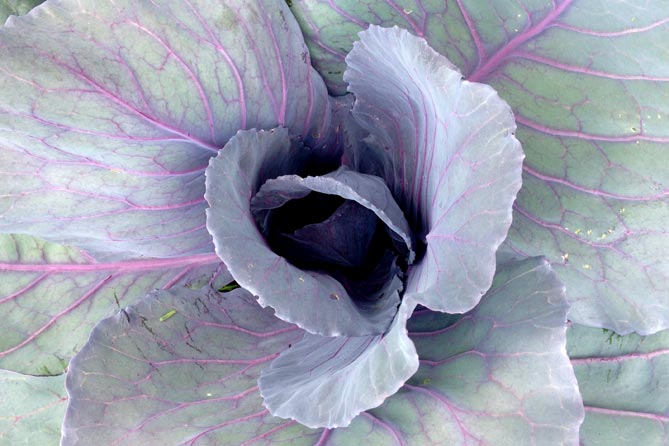
4. Control Weeds, Pests and Diseases
Anyone who has the optimistic delusion that bad ideas will never really take root and grow has never weeded a garden. If only it was as easy to grow healthy vegetables and herbs as it is to let weeds flourish. And wouldn't it be great if there weren't pests perfectly suited to each plant, evolving together with their host in perfect symbiosis, with a life cycle perfectly matched to the plant's growth phases, sometimes even mimicking the appearance of the plant, or other benign garden guests. So, we weed incessantly, and keep our eye on hungry intruders and systemic plagues that can devastate our bounty in a few short days.
You need to maintain the health of your company and brand by being vigilant in initial strategy meetings and brainstorming sessions about consistency in messaging, brand story development, accurate assessment of your prime prospects, application of brand identity materials, to name just a few things. Apply best practices to weed out or neutralize things that may creep in or crop up and damage the integrity of your brand, or campaign, such as:
• bad ideas (counteract with thorough research, testing, focus groups, analysis, working with experienced marketing professionals)
• bad press (counteract with good PR/damage control)
• poor performance (counteract with A/B testing, research, industry awareness, new developments, continuous modification to maximize results)
• brand dilution (counteract with rigid adherence to established brand identity guide)
• customer service concerns (counteract with prompt responses, social media consistency)
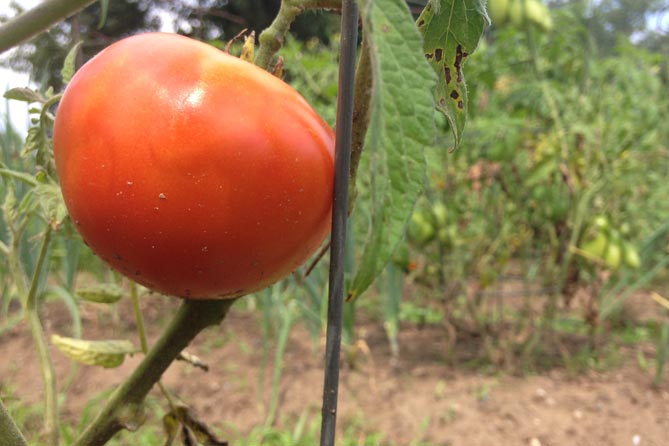
5. Harvest at the right time
You've put a lot of effort into your garden, but one day you notice your lettuce has bolted, your tomatoes have fallen off the plant, or your peppers are rotting on the vine. Laziness has kept you from taking an empty basket out to the garden, and/or paging through thousands of leaves for ripe green beans. Overconfidence and lack of attention to growth and signs of maturity have caused you to lose some of your bounty. Depressing and frustrating, considering your careful planning, great design, and vigilant maintenance. Wasteful and unnecessary.
In marketing, timing is critical, start to finish:
• You've got sound research, good strategy, great messaging to promote your brand. Now present it to your customer as a quick easy read. Respect their time. Keep their attention. Harvest their intent at the peak of its strength
• Make sure your digital marketing is nimble and responsive. Online readers need fast, concise website content. Mobile customers need responsive content that helps them make informed decisions efficiently. Make sure your content or inbound marketing uses smart forms that identify a customer's place in the buyer's journey and deliver appropriate content to them
• Marketing materials or campaigns that have outlived their usefulness or window of opportunity should be retired before they end up squandering company resources, or worse yet, cause confusion and disdain in your audience
• Leaving content inquiries, product questions, requests for proposals, comments and affirmations "on the vine" too long causes prospects and customers to believe your company is not well-staffed or staying current with the market, or worse, just doesn't care about them
Closing the Garden Gate
A well-planned, thoughtfully designed, intelligently implemented marketing program contains a variety of living, growing elements. Well maintained and cared for, its yields are bounteous and prolific. For mission-driven companies like yours, this means not just increased sales and profit, but effecting true change in the world, fulfilling your mission, reinforcing your values and harvesting a whole new crop of brand advocates—people in love with your product, service, idea, or cause.





